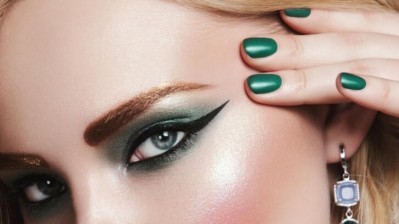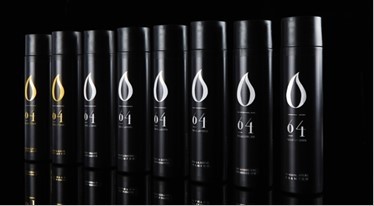L’Oréal laboratory head on new anti-pigmentation ingredient Melasyl

French multinational L’Oréal Group has recently launched Melasyl, a breakthrough molecule that’s designed to address localised pigmentation issues that lead to age spots and post-acne marks.
It took L’Oréal’s scientists 18 years of research to get the ingredient right and it’s now available to consumers in La Roche Posay’s MelaB3 serum and MelaB3 SPF30, and brands including L’Oréal Paris and Vichy also plan to formulate with the new molecule.
We spoke to L'Oréal’s Cheffe de laboratoire (head of laboratory) Peggy Sextius to learn more…
Cosmetics Design-Europe (CDE): Can you tell me more about how Melasyl works to target skin pigmentation please? How does it go beyond correction to intercept pigmentation before it starts?
Peggy Sextius: Melasyl is a new cosmetic ingredient that was developed by L'Oréal. The objective is to regulate hyperpigmentation issues, dyschromia, and improve skin tone uniformity.
Melanin is the main pigment that is responsible for the colour of the skin. In pigmentary disorders melanin is overproduced or accumulates excessively. Melasyl is the first ingredient that acts on those excess of melanin, by capturing the precursors of melanin. Those precursors are not very colourful. By capturing them before they transform into eumelanin and pheomelanin, which are coloured pigments, Melasyl prevents localised hyperpigmentation.
It's really a different mode of action when compared to the other ingredients on the market that target pigmentation. Very often, those ingredients attempt to reduce the activity of tyrosinase – the enzyme that catalyses the production of melanin.
We've shown that Melasyl does not act on tyrosinase. In the presence of Melasyl, melanin synthesis takes place in a natural way. And Melasyl is ‘like Pac Man’ in that it works at certain steps in the process of production of melanin. It intercepts the precursors before they transform into melanin, accumulate and mark the skin.
This mode of action is original. Very interestingly, we have shown that this leads to very good performance in the clinic compared to reference active ingredients – such as kojic acid, arbutin or even hydroquinone, which is “the gold standard” in dermatology. These data were recently published: Melasyl has a significantly better anti-pigmentation performance versus those ingredients. So, it's a new mode of action and the result is highly convincing in terms of clinical efficacy.
CDE: Can you tell me about how this ingredient works/the science behind it?
PS: Something important to think of is that localised skin hyperpigmentation are disorders that affect the skin as a whole. They of course consist of an excess of melanin, and we are able now to intercept efficiently this excess of melanin and to prevent its accumulation in the spot area.
But what is not visible to the naked eye is that the skin under the brown spots in its entirety. I mean the epidermis and the dermis, is disturbed. Its function and structure are altered. It is therefore important, when it comes to treating dark spots, to reduce the production of melanin, but also to combine this action with other ingredients which will target all the alterations not visible to the naked eye.
This is why we are associating Melaysl with other ingredients for efficient treatment of pigmentary disorders. The objective is to have an exhaustive action on the spot: prevent melanin excess, but also target the entire skin environment in the spot area so that the spot doesn’t appear again, and so get a persistent efficacy.
CDE: I understand that this discovery was a big step forward for L'Oréal in terms of longevity. Can you tell me more about this please? Is longevity a topic of focus for L'Oréal right now?
PS: Yes, it's definitely a very exciting period where we are actively researching and accelerating in the field of longevity internally and partnering with experts. With Melasyl, we are indeed in this field.
Longevity is about adding ‘life to years’ and not ‘years to life’, it means to keep the skin healthy for longer periods of time.
The spots are there because the skin has locally lost part of its function. With Melasyl-containing products we are not only intercepting the excess of melanin, but we are also targeting all the disturbances of the skin in the spot area. By doing that we are in the frame of ‘longevity’, with preventive actions to have healthier skin.
CDE: L'Oréal has been working on this discovery for 18 years. Can you tell me more about the challenges you faced along this journey?
PS: Yes, one of the first challenges was that to open the door to innovation, we wanted to screen a large number of ingredients.
This story began 18 years ago with us screening over 100,000 ingredients. But, as you can imagine, with such a high number of applicant ingredients, it was necessary to have a sequential research strategy. We had first to develop a very simplex but relevant skin pigmentation in vitro models with normal human melanocytes which allowed us to screen many ingredients.
Then we used more and more complex biological models, up to the pigmented reconstructed skin, on which we could apply topically the best candidates to get close to what a consumer will do at home.
So, yes, the first challenge was the setup of a relevant research strategy – to go from 100,000 ingredients to the selection of the best one.
Another challenge was the design of the molecule by itself with digital tools and in silico prediction to optimise its efficacy, but also make it compatible with other of our requirements such as human safety, and skin penetration.
Following this, we carried out tests to assess the safety for human health and the impact on the environment.
There was also all the work around the formulation to make it stable and compatible with other ingredients. Then finally, all the clinical efficacy in humans; on different types of hyperpigmentation and different phototypes.
As you can imagine, this necessitates the mobilisation of several skills: biologists, chemists, clinicians, toxicologists. We had to coordinate numerous expertise to go from the discovery up to the development.
But in the end, it was Melasyl that was selected and demonstrated the best performance and the best compromise between all parameters – with no adverse effects and no irritation.
CDE: Are certain skin types/tones more susceptible to pigmentation?
PS: Pigmentation disorders affect a large proportion of the population. All over the world, whatever their natural skin tone.
Very recently La Roche Posay published a study that was carried out with 48,000 participants in 34 countries. In this survey, it appears that fifty per cent of the participants declared to have a pigmentation disorder. This is a huge occurrence. This means it affects people in all countries and all geographical situations.
But some populations may be more prone to develop these types of lesions as a function of the pigmentary disorder and skin colour. Globally, individuals with more pigmented skin tend to have more pigmentary skin disorders, but it also depends on the type of the disorder.
Dark-skinned individuals for instance are more sensitive to post-inflammatory hyperpigmentation. These disorders are pigmented spots that appear around a skin lesion, like an acne pimple or a scar. They can last a very long time – sometimes for years.
While melasma affects all the population, but mainly women between 20 and 40 years old. More than 80% of melasma is seen in women, but men can also be affected. Melasma is seen in all skin types, but some studies show that it is more prevalent in medium to darker skin tones.
Then, in light-skinned individuals we see more actinic lentigines also called age spots.
Melasyl was assessed on different types of localised hyperpigmentation and different skin tones. It inhibits the production of melanin induced by UV exposures with a very good efficacy even when compared to a reference active (kojic acid, arbutin or hydroquinone). This was confirmed on several phototypes.
CDE: Can you tell me any more about the Vichy and L’Oréal Paris products that this ingredient will also feature in? Are they sun care products? or skin care? How will they differ from the La Roche Posay ones? (is it price point, or more?)
PS: I’m afraid it's a bit early to give more information on these formulas. All I can say is that it will be in the same spirit.
It is really our belief that we must manage the localised excess of melanin – with Melasyl but also have combinations with other actives for an exhaustive treatment of the pigmented lesions.
La Roche Posay did its own combination, it will be the case as well for other brand’s formulas that contain Melasyl.
In La Roche Posay products, it is, among others, associated with a key ingredient: niacinamide (vitamin B3). This is essential because we know there is chronic inflammation in the environment of the spot. This is not an acute inflammation that triggers swelling, warmth, or redness, but a ‘quiet’ inflammation that persists over time. This inflammation may be responsible for maintaining of the dark spot, so it's important in anti-dark-spot products to have an efficient anti-inflammatory ingredient.
CDE: And is there anything else you'd like to add on this topic for CosmeticsDesign-Europe readers, please?
PS: Yes, indeed several points!
We are talking about dark spots and preventing hyperpigmentation. It is key to remind people that the first line of prevention is protection from UV rays, because this is the main trigger or aggravating factor for dark spots. Sun protection is crucial, it's a message that deserves to be repeated.
I also would like to highlight that our laboratories have been studying pigmentation for 35 years now. We carried out clinical studies to assess the efficacy of various ingredients but also describe the features of pigmentation disorders and understand what is necessary to treat it. This is why we can design efficient combinations of actives.
But we also needed it to modelise skin pigmentation in vitro, to be able to screen actives and to gain knowledge on the mechanisms of UV-induced hyperpigmentation. We were the first to develop a pigmented reconstructed skin model in 1996, and to show that this model can react to a trigger like UV to induce hyperpigmentation. This was even before Melasyl. Our laboratories have a very solid comprehension of this topic.
What's interesting also with this molecule is that we really addressing and tackling the issue of inclusivity because hyperpigmentation concerns everybody; whatever their skin types, and this molecule works across all photo types. And it's actually unique because it has no impact on your natural skin colour.






















